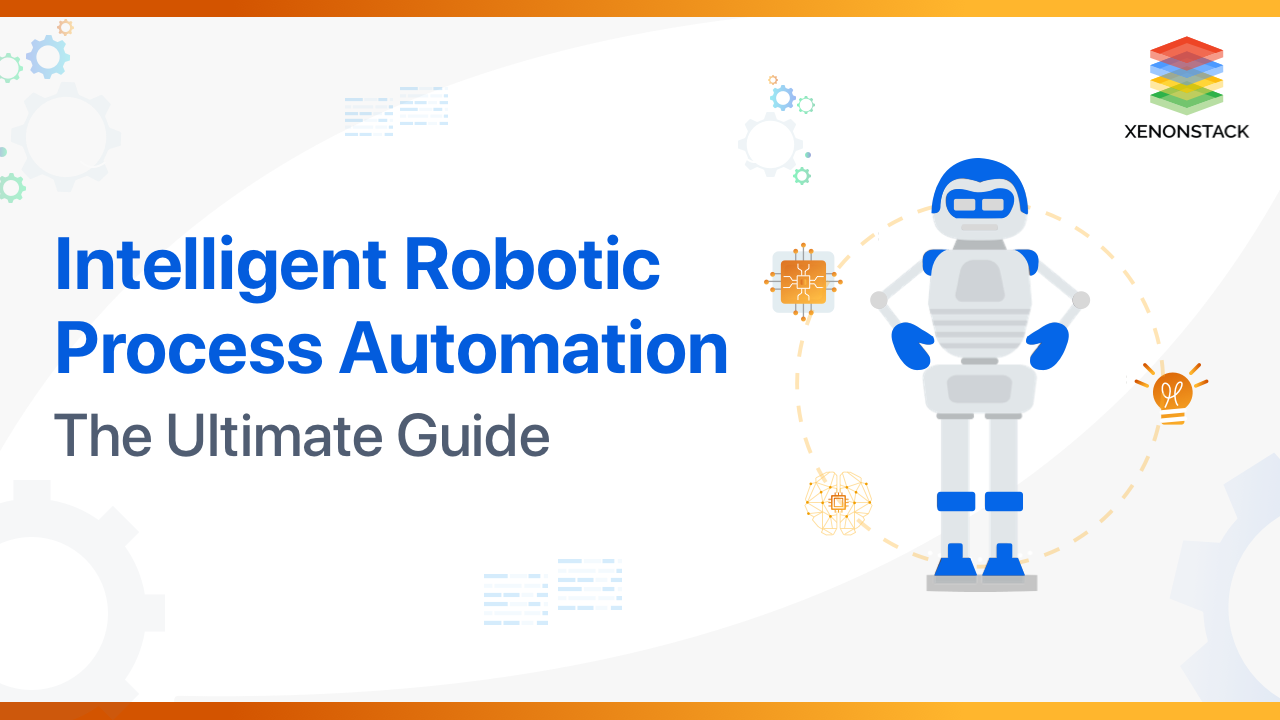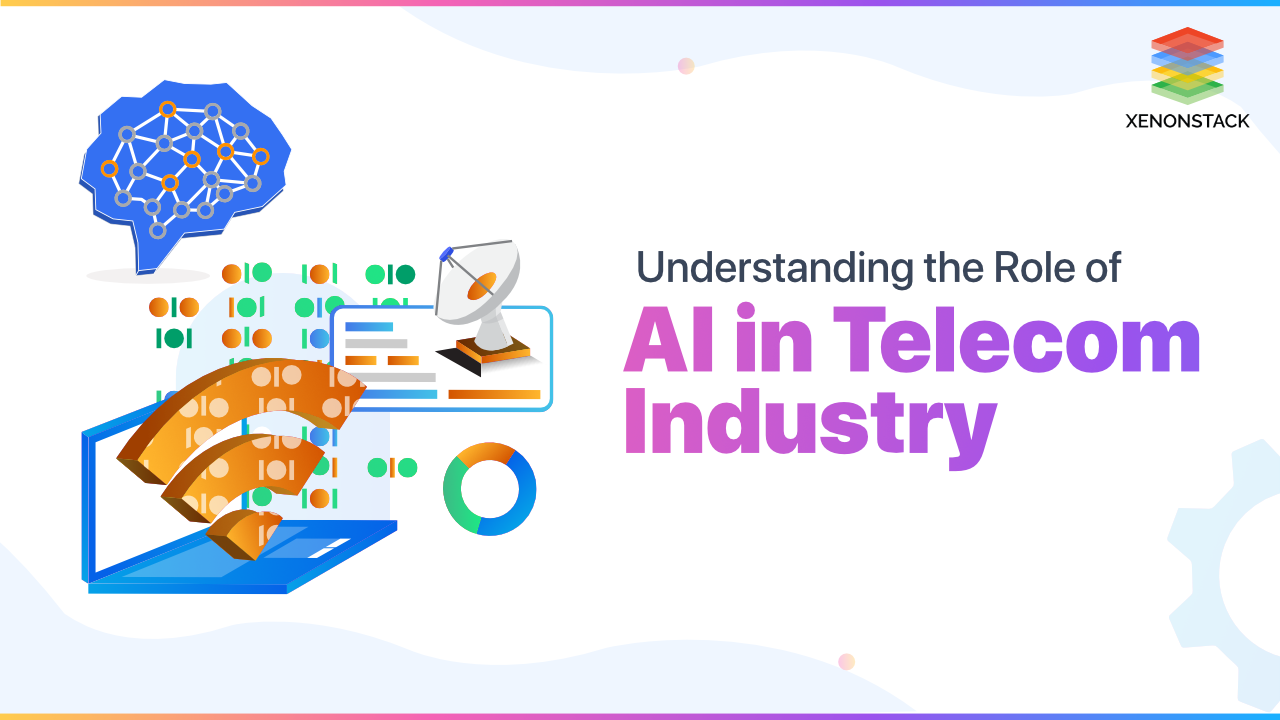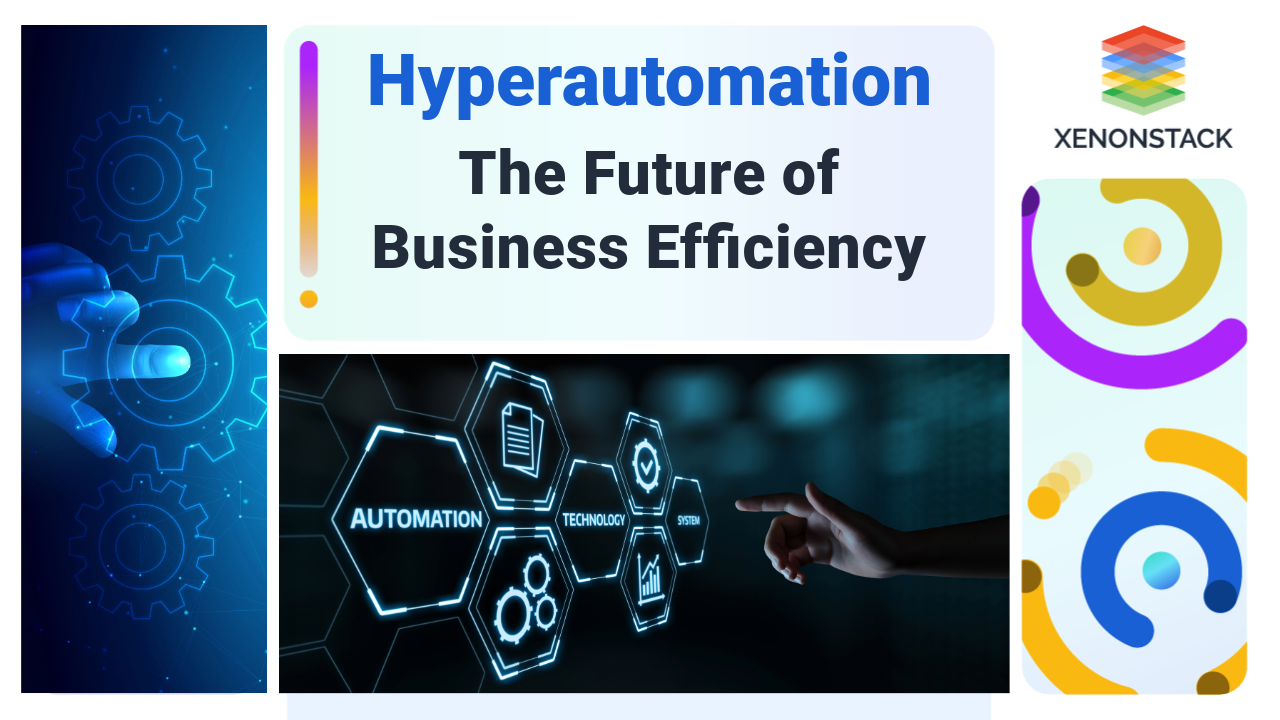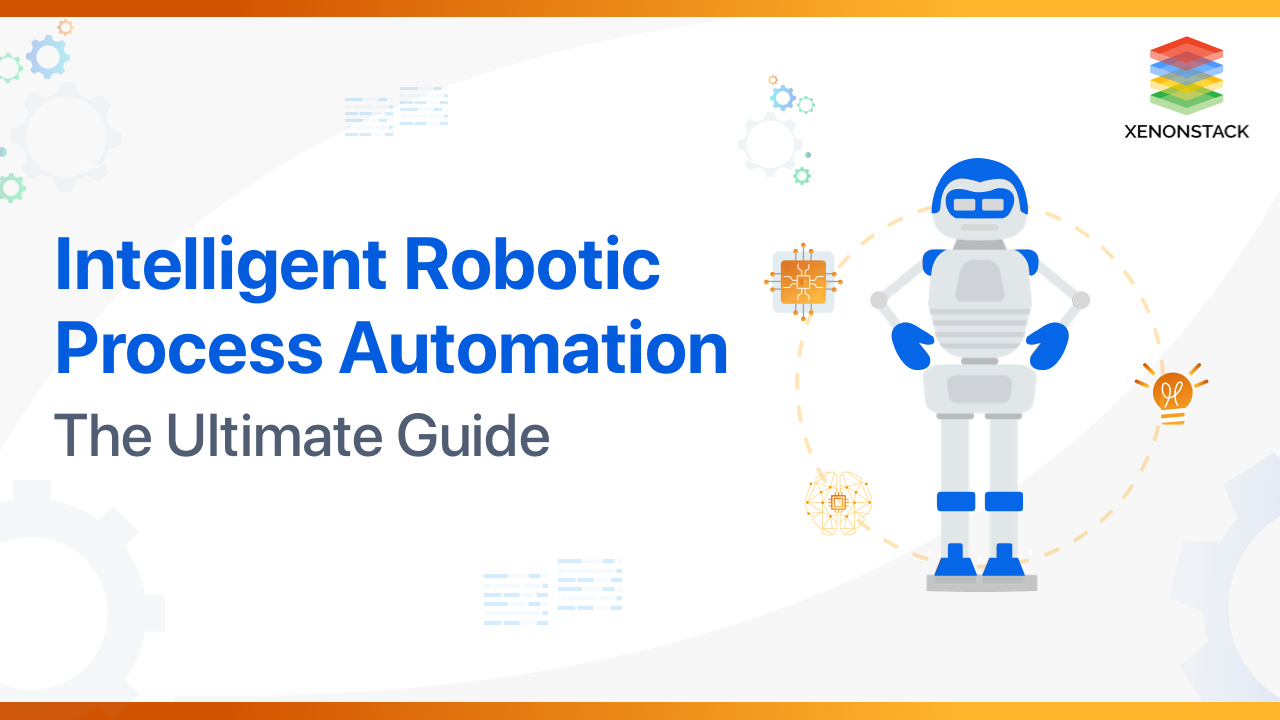What is Intelligent Robotic Process Automation?
Robotic Process Automation (RPA) automates tasks across applications and systems. It does not require the development of code, nor it needs direct access to the code or database of the applications. With Intelligent RPA, enterprises can add value with AI and Machine learning capabilities for cognitive Insights
-
Robotic: Machines that mimic human actions are called Robots.
-
Process: The Sequence of steps which lead to meaningful activity. For example:- The process of making your favorite dish etc.
-
Automation: Any process without human intervention. The primary goal of the Robotics process automation process to replace repetitive and boring clerical tasks performed by humans, with a virtual workforce. Learn more about Intelligent Automation in this insight.
Intelligent Automation process divided into three prime modules, which has to follow their procedure. Click to explore about, Intelligent Process Automation Systems
How Intelligent Robotic Process Automation works?
Robotic Process Automation (RPA) can also be called a virtual employee. RPA works with existing applications and thus carries out structured processes automatically. No changes have to made to existing systems RPA does the job just like employees do it. Thus RPA can automate a variety of methods, including invoice processing, report generation, and employee onboarding. With Robotic Process Automation, business processes are carried out quickly, without errors and fully automatically. To set up an RPA bot isn't required to know the programming. RPA Bots replicate employee actions. There are four ways to set up RPA bots.
Programming
As expected, the most effective interfaces for programming bots is a programming language. Programming instructions essentially tell the bot which programs to use and how to interact with those programs. However, using a programming language requires skill and patience, so this method is relevant for technically inclined personnel.
Graphical User Interfaces
Many vendors are offering solutions to program RPA bots with drag & drop interfaces. Anyone in the company should be capable of setting up simple bots.
Recorder
Just like macros in excel, bots can complete recorded actions. Recorded actions can involve numerous enterprise software such as taking data from Salesforce, merging it with a report from MailChimp in excel to identify which customers to target during the company’s routine customer activation SMS campaign. Recorder function is a significant advantage in the tool because it enables rapid bot programming.
However, recorders have some limitations as well like Recording a set of functionality can be difficult and error-prone. Maintaining recorded bots is difficult. Their code is machine produced and may not be easy to read. Re-recording actions after each small change can also be time-consuming.
Self-Learning Bots
These bots watch recorded employee activity to learn automatable tasks. They are the easiest to deploy bots. However, their learning is not always perfect since they rely on recognizing images in scraped screenshots. Especially during initial deployment, they could be making mistakes, and their activity needs to audit. Most of the time mistakes avoided as bots understand when they see cases they don’t know how to complete. In such cases, they contact employees for guidance. Once bots are set up, and the orchestration module helps start/stop bots and analyze their activity.
A continuum of automation that begins with basic, local tasks and expands to enterprise-wide, smart automation powered by ML and AI. Taken From Article, Scaling Up RPA for Process Automation
What are the benefits of Intelligent Robotic Process Automation?
The benefits of With Intelligent RPA for companies are mentioned below:
-
Increase the speed of/reduce errors in customer-facing processes to increase customer satisfaction.
-
It allows employees to focus on higher value-added activities improving both business results and employee satisfaction.
-
Mitigate manual data edits, enhancing the quality and reducing compliance risks.
-
Reduction of data entry and manual errors - Managers see reduced mistakes as one of the primary benefits of RPA. A significant advantage of automation is that machines do not get distracted. Once the RPA setup is complete, standard errors eliminated. It does not mean that RPA provides error-free operation. RPA operations are checked from time-to-time to ensure that edge cases are also covered successfully by RPA bots.
-
Improved data quality - Reduction in manual errors leads to higher quality data, enabling more reliable analyses.
-
The scope of Data Collection - Robots interaction with legacy systems uncovering data, previously labor-intensive to extract. Robots enable the analytics team to access more data which leads to more accurate analyses.
-
Workload Reduction - Automatic reports valuable for the analytics department, allowing them to focus on more custom analysis.
-
Churn Reduction - Over time, automation reduces the speed at which a person hire for growth. As a result of this efficiency increase, the person will be managing a smaller, more effective and satisfied workforce.
-
Improved focus - The focus is essential for any department. Having less automation-related work allows the company to focus on more critical technical problems. Human interaction with sensitive data eliminated the probability of fraud and compliance issues.
RPA is an effective way to get accuracy in the successful execution of a task. Click to explore about, Guide to build RPA Center of Excellence
Why Intelligent Robotic Process Automation Matters?
There are several importance of Intelligent Robotic Process Automation few of them are described below:
RPA - Doing More with Less
RPA robots are adept at automating repetitive data entry tasks – even complicated series of works. They do it better, cheaper, faster, and accurately than any human.
RPA Software at Work
From invoice data entry, general ledger allocations, credit applications, claims to process, to payables processing and employee onboarding, RPA is a fast, accurate, freeing staff to focus on resolving anomalies and serving customers. Robotic Process Automation use in a variety of industries, including Healthcare, Financial Services, Service Providers, Manufacturing, Distribution, and Insurance.
RPA is Code Free
RPA is ideal for a business model, among users of legacy ERP applications where coded solutions are not feasible or cost-prohibitive. Rules ERP or CRM application, interacting with the applications as a human, not as a program does.RPA can be deployed quickly by the operations side of the business, speeding the return on investment.
RPA can fulfill the space between Cloud ERP and legacy application, recalling the legacy operation's value and adding the cloud's capabilities. Click to explore about, Implementing RPA in ERP for Systems Transformation
How to adopt Intelligent Robotic Process Automation?
The steps for the adoption of Intelligent Robotic Process Automation are mentioned below:
Find the Right Process to Automate
Selecting the right process is critical. The method chosen has to be balanced between simple enough to automate for a project, while having enough business value or high volume. While identifying the suitable process to automate, following what should be looking for
- Rule-based methods
- Structured and Repetitive processes
Do a Pilot Run
Building the base automation system, testing and iterating until it achieves process efficiency.
-
Teams: The internal team that evaluates process takes it apart, builds the automation application. The outsourced team that has expertise in building Robotic Process Automation solutions. The internal teams might have a better understanding of processes; they would be new to the technologies and tools involved in RPA.
-
Tools: If bringing in an outsourced team for the RPA project, they will have their own set of tools and technologies that work best for requirements. However, if an internal team is working on this, they have to choose between commercial or freely available RPA tools. These help build process maps and based on that, the automation software or bot.
Mistakes that organizations make at this stage
-
Missed coordination with IT - As RPA involves the adoption of new technology, enterprises often assume that IT will lead the charge. They should be in the sink with the team so that they can make the necessary environments at the right place.
-
Traditional Delivery Models - Traditional Delivery models like the waterfall would not be useful in an RPA project. Since the entire team focused on “build-test-iterate,” traditional delivery models would only be a roadblock in the process.
Change Management
A few aspects that need to be the plan for
-
Re-assigning Workforce - As RPA automates back-office operations, segments of the workforce are now free from some of the tedious, time-consuming tasks. The enterprise team has to plan so these employees can smoothly transition to newer or value-added roles.
-
Integration - While RPA will mean new systems to work with, it should not be responsible for the wholly established process. Once implementation is done, RPA bots should be integrated with the existing system to ensure continuity and ease of use.
Measure ROI
The last step for the Robotic Process Automation project would be to evaluate the ROI. For this, enterprises should start with the following primary metrics -
-
Scale - What is the increase in some task completion within a set timeframe, with RPA?
-
Quality - If the bot has designed correctly, the percentage of errors mostly zero. When done right, RPA implementation should show clear gains across all these metrics. That, combined with the reduction in resources required to run the process at peak efficiency. While the exact ROI calculation will be different for the enterprise, basis the complexity of their processes.
As the pilot RPA project is shown to deliver tangible ROI, it’s time to scale it up. Both regarding increasing the volume of tasks handled by the project, as well as expanding RPA to more enterprise processes.
RPA gives high flexibility and agility that is necessary for the Telecom industry to raise and face challenges coming in its path while moving. Click to explore about, Robotic Process Automation in Telecom Industry
Intelligent Robotic Process Automation Best Practices
It's essential to begin an RPA implementation with business processes that are best suited for automation. Selection based on criteria such as:
-
Mature, stable processes -The Processes that are stable, predictable and well documented, with operating costs that are consistent and well defined
-
Measurable savings -Cost savings and benefits gained can typically be express concerning the higher accuracy, faster response times, lower cost, etc.
-
High volume / High Frequency -These processes provide a faster ROI. Understand the human resources required to build automation projects. Will look to make the team from internal talent, who may have an existing knowledge of business processes and ideal automation opportunities?
-
Plant Automation-technology and ETech recommend that such a person be an executive sponsor who can also handle the financial aspects of implementation. Relatedly, an RPA center of excellence (COE) might ensure the right level of centralization.
It's better to invest time into breaking the complicated process into sub-processes, and then implement automation only for those that do not require a human-level decision. For instance, the parts that gather the information needed to make a decision could automate, and leave the decision-making itself to employees.
UiPath's Athena AI represents the company's evolution from a pure RPA provider to a comprehensive process intelligence platform. Key capabilities include:
The Neuron Suite has become the enterprise standard for cognitive process automation with:
Microsoft's integrated approach combines Power Platform, Dynamics, and Azure capabilities:




